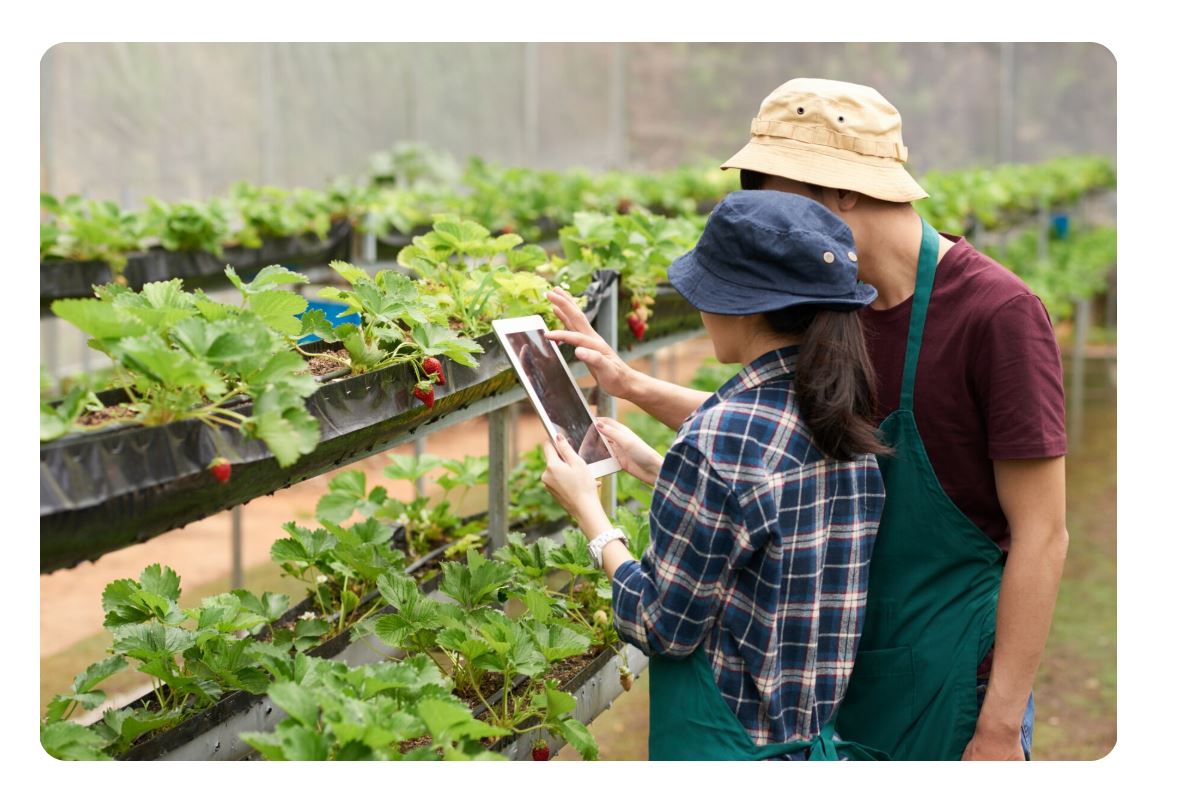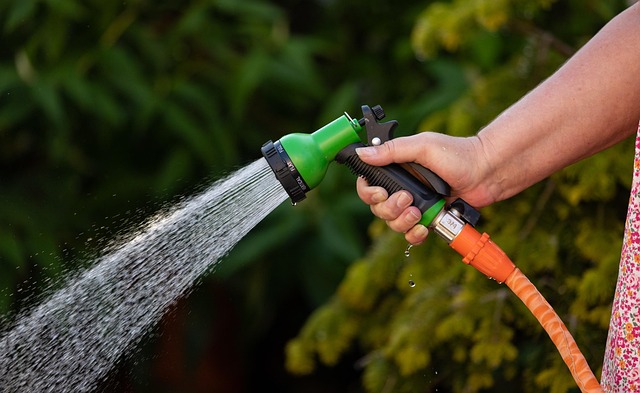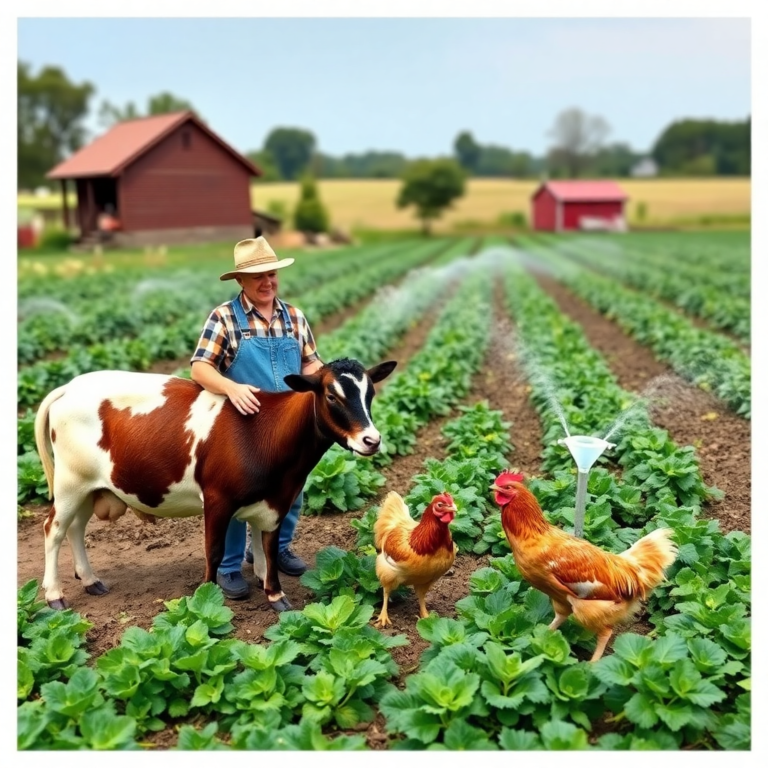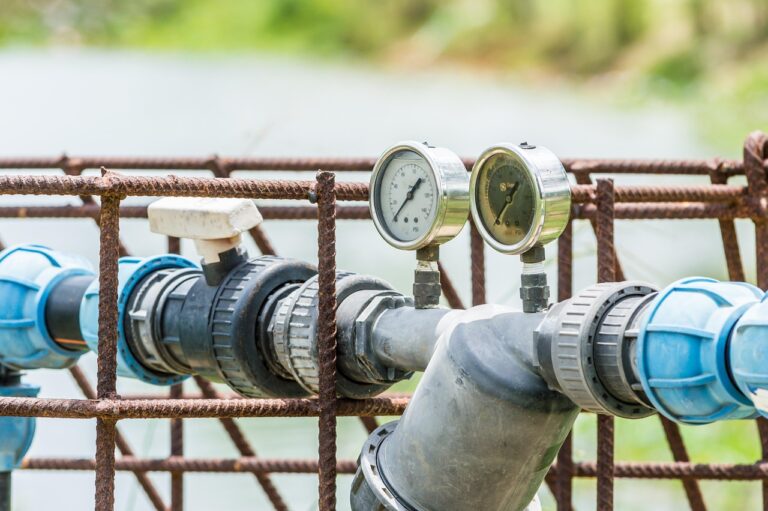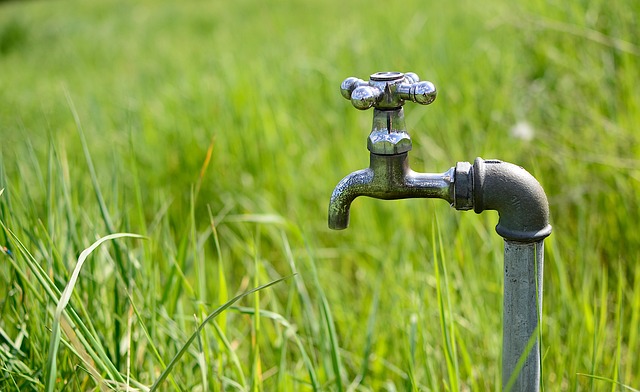5 best irrigation for vegetable garden: Expert Reviews & Tips
After setting up my first vegetable garden, I quickly realized that watering by hand was time consuming and inconsistent.
I tested several irrigation systems over the past two years some worked well, others didn’t. This guide is based on what actually worked for me, including what saved water, made daily care easier, and helped my vegetables thrive.
Whether you’re starting small or going big, I’ve included only the systems I’d confidently recommend to other gardeners.

Starting a vegetable garden is an exciting project, especially when you have a proper irrigation system in place to keep your plants hydrated.
Drip irrigation is one of the best ways to water your garden efficiently and effectively. It delivers water directly to the plant roots, reducing water waste and ensuring your vegetables get the moisture they need.
Whether you’re new to gardening or expanding your current setup, here are the 5 Irrigation Systems for Vegetable Gardens that are highly recommended by gardeners for their reliability and ease of use.
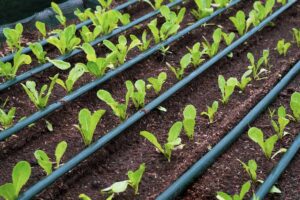
Rain Bird Drip Irrigation System
Rain Bird is a well-known brand in the irrigation world, offering a variety of reliable, cost-effective drip irrigation products.
Their systems include emitter tubing, adjustable drippers, and automated timers, making it a solid choice for vegetable gardeners.

Why It’s Great:
- Affordable: Rain Bird products are priced reasonably and available at many home improvement stores, making them accessible to most gardeners.
- Customizable: You can choose from different emitter tubing options to suit your garden’s layout. Their emitter tubing with built-in emitters every 6–12 inches is perfect for row gardens or raised beds.
- Durable: Known for its reliability and longevity, Rain Bird’s irrigation systems can withstand various weather conditions.
Where to Buy: Available at local stores like Home Depot, Amazon, and directly from Rain Bird.
DripWorks Drip Irrigation System
DripWorks offers a wide range of high-quality irrigation components, including customizable kits for all garden sizes.
The website provides useful resources to help you design the perfect system based on your garden’s needs, making it a great choice for beginners and seasoned gardeners alike.
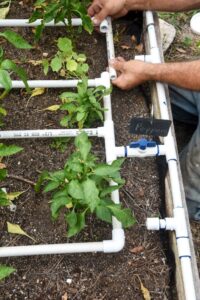
Why It’s Great:
- Expert Guidance: DripWorks provides valuable design tools and resources, helping you figure out the best setup for your vegetable garden, regardless of size.
- Variety of Options: Whether you have containers, raised beds, or traditional in-ground gardens, DripWorks has customizable solutions that fit various garden setups.
- Top-Quality Products: Their products are durable and designed for efficiency, allowing water to reach your plants with minimal waste.
Where to Buy: Visit DripWorks.com for a wide selection of parts and pre-designed kits.
Orbit Drip Irrigation System
Orbit is another popular brand found at big-box stores like Lowe’s and Home Depot. They offer a selection of affordable drip irrigation components, including emitter tubing, stakes, and micro-sprays.
Why It’s Great:
- Easy to Find: Orbit’s products are available at local stores, so you can easily pick up what you need in person.
- Affordable: Orbit provides budget-friendly drip irrigation options, perfect for small to medium-sized vegetable gardens.
- Interchangeable Parts: Their components are compatible with other brands, so you can mix and match depending on your system’s needs.
Where to Buy: Available at major retailers like Home Depot, Lowe’s, Amazon, or Orbit’s website.
Drip Depot Drip Irrigation System
Drip Depot offers a wide range of drip irrigation parts, including pre-designed kits and individual components.
Their website is full of helpful resources, making it easy for gardeners to find exactly what they need for their vegetable garden.
- Comprehensive Resources: Drip Depot has detailed guides and customer support to help you design your irrigation system and ensure it fits your water flow and pressure needs.
- Large Selection: From drip tubing to connectors and emitters, Drip Depot offers a full catalog of irrigation parts to create a custom system that works for you.
- Quality Products: Known for its reliability and effective irrigation components, Drip Depot ensures your garden gets the water it needs without wasting it.
Where to Buy: Visit DripDepot.com for all your drip irrigation needs.
DIG Drip Irrigation System
DIG offers a variety of irrigation products, including emitter tubing, micro-sprays, and all-in-one kits. Their drip systems are designed to conserve water while keeping your vegetable plants healthy and hydrated.
Why It’s Great:
- Water Efficiency: DIG’s systems are designed with water conservation in mind, making them ideal for areas where water usage needs to be minimized.
- Reliability: Known for their durable products, DIG irrigation systems perform well in diverse conditions.
- Affordable: DIG offers a range of pricing options, from budget-friendly kits to more advanced setups for larger gardens.
Where to Buy: Available at retailers like Home Depot, Amazon, and DIG’s website.
Top 5 Irrigation Systems for Vegetable Gardens
| Irrigation System | Key Features | Best For | Where to Buy |
|---|---|---|---|
| Rain Bird Drip Irrigation | Affordable, customizable tubing, and adjustable emitters | Small to medium-sized gardens, row gardens | Amazon, Home Depot, Rain Bird’s website |
| DripWorks Drip Irrigation | Wide selection of parts, design resources, high-quality components | Large gardens, raised beds, custom setups | DripWorks.com |
| Orbit Drip Irrigation | Budget-friendly, compatible with other brands, easy-to-find components | Small to medium-sized gardens, beginners | Home Depot, Lowe’s, Amazon |
| Drip Depot Drip Irrigation | Comprehensive guides, customizable kits, reliable customer support | Custom irrigation setups, large vegetable gardens | DripDepot.com |
| DIG Drip Irrigation | Water-efficient, durable, versatile, available in both kits and individual parts | Water conservation, budget-conscious gardeners | Home Depot, Amazon, DIG website |
Tips for Choosing the Right Irrigation System for Your Vegetable Garden:
- Consider Your Garden Size:
If you have a small garden, a simple, cost-effective system like Rain Bird or Orbit may be sufficient. For larger gardens or raised beds, you might want a more customizable system, like those offered by DripWorks or Drip Depot. - Understand Your Water Pressure:
Some drip systems require specific water pressure to function effectively. Make sure your water pressure matches the system you choose, or opt for a system with pressure regulators if necessary. - Test Your System:
Once installed, test your irrigation system by running it for a period of time to ensure each emitter is working properly and providing consistent water distribution. You may need to adjust your watering schedule based on this test. - Timers Are a Must:
Invest in a reliable timer to automate your watering schedule. This will prevent overwatering and ensure your garden is consistently hydrated without you needing to remember to turn the system on and off. - Maintenance:
Clean and maintain your drip system regularly. Check for clogs in emitters or tubing, and replace any damaged parts to keep your system running smoothly.
Drip Irrigation
Overview:
Drip irrigation is widely considered the best method for watering vegetable gardens. It works by delivering water directly to the plant’s root zone through a system of tubes, emitters, and valves. Water flows slowly and consistently, ensuring that your vegetables get the right amount of moisture without excess runoff or evaporation.
Advantages:
- Water Efficiency: Drip irrigation minimizes water waste by applying water directly to the soil, where it’s needed most. This is particularly beneficial in areas with limited water resources or drought conditions.
- Reduced Weed Growth: Since water is delivered directly to the roots, it helps to prevent the soil from staying wet in areas between plants, which reduces weed growth.
- Targeted Delivery: The system can be adjusted to target specific plants with precise amounts of water. This is especially useful for vegetable gardens with different watering needs.
- Reduced Disease Risk: Drip irrigation avoids wetting the leaves, which can prevent the spread of fungal diseases and other plant infections.
Best For:
- Small to medium-sized gardens
- Raised beds, container gardening, and row planting
- Water-conscious gardeners looking to reduce consumption
- Gardeners in regions with hot or dry climates
Considerations:
- Drip systems can require an initial investment in tubing, emitters, and timers, but the long-term water savings and efficiency make it a great investment for most gardeners.
Soaker Hoses
A soaker hose is a type of porous hose that allows water to seep out slowly along its length. It is laid along the soil or placed in the ground, typically under mulch, to water your vegetable plants.
Advantages:
- Ease of Use: Soaker hoses are incredibly simple to set up and require minimal maintenance. You can lay them down in rows or along the perimeter of your garden.
- Even Watering: The water is distributed evenly along the hose, ensuring that all plants along the path receive consistent moisture.
- Cost-Effective: Soaker hoses are generally affordable and widely available. They are a budget-friendly solution for those looking to implement basic irrigation without a significant upfront cost.
Best For:
- Small to medium-sized gardens
- Vegetable gardens with row plantings or ground-level planting beds
- Gardeners on a budget
- Those looking for a simple, low-tech option
Considerations:
- While soaker hoses are effective for general watering, they may not be as water-efficient as drip irrigation. Over time, the hose may develop clogs, reducing the system’s effectiveness.
Sprinklers
Overview:
Sprinklers are a classic method for irrigating large areas, and they can be used for vegetable gardens, especially if you have a big plot. They spray water over the garden in a mist or stream, covering a wide area.
Advantages:
- Coverage: Sprinklers are ideal for covering large areas of your garden quickly and uniformly. This makes them a good choice for vegetable gardens with a lot of space.
- Simplicity: Many gardeners find sprinklers easy to set up and use, especially if they are using a portable or rotating sprinkler system.
- Great for Lawn Areas: Sprinklers work well for vegetable gardens that are integrated into larger landscape spaces that also need to be watered (like lawns).
Best For:
- Large gardens or areas that combine vegetables and lawn
- Those with ample water supply and more space to cover
Considerations:
- Sprinklers are not the most water-efficient method. They often lead to water wastage through evaporation, runoff, and watering areas that don’t need it (like sidewalks or pathways).
- They may wet the leaves of plants, leading to increased risk of fungal diseases.
Manual Watering with a Hose or Watering Can
Overview:
Manual watering involves using a hose or watering can to water your plants by hand. This method allows you to focus on specific plants and provide individualized attention.
Advantages:
- Control: You have complete control over how much water each plant receives, making it ideal for small or raised-bed gardens.
- Simple: No installation is required, and it’s very cost-effective, especially for gardeners with limited space or those just starting out.
- Flexibility: You can easily adjust how much water you apply and where you direct it, which can be helpful for plants with varying water needs.
Best For:
- Small vegetable gardens
- Raised beds or container gardens
- Gardeners who enjoy hands-on care
Considerations:
- Manual watering is time-consuming, especially for larger gardens, and it may not provide the consistent hydration that plants need.
- Over-watering or under-watering can be an issue, depending on how thoroughly you water each plant.
Subsurface Irrigation (Capillary Mats)
Subsurface irrigation is a method where water is delivered to the root zone beneath the soil surface, typically through a network of porous pipes or capillary mats that wick water up from below.
Advantages:
- Water Conservation: Since water is delivered directly to the root zone, there’s less evaporation and water waste.
- Prevents Overhead Wetting: This method helps reduce the risk of plant diseases that thrive in wet foliage.
- Minimal Maintenance: Once set up, subsurface irrigation systems require little maintenance and are highly efficient.
Best For:
- Small to medium-sized gardens
- Water-conscious gardeners
- Gardens with plants that require consistent moisture
Considerations:
- Subsurface irrigation can be more complicated to set up and may require more investment than other methods.
- This system is typically used in larger-scale commercial gardens but can be adapted for home use with some planning.
What Type of Irrigation is Best for a Garden?
When it comes to watering your garden, choosing the right irrigation system is crucial to ensure that your plants receive the right amount of water for optimal growth.
The type of irrigation that is best for your garden will depend on several factors, such as the size of your garden, the types of plants you’re growing, your climate, and your water usage preferences.
Here, we’ll explore the various types of irrigation systems available and help you determine which one is best suited for your garden’s needs.
Drip Irrigation
Drip irrigation is one of the most efficient and effective irrigation methods for gardens. It delivers water directly to the root zone of plants through a network of tubing, emitters, and valves. This method minimizes water waste and evaporation, ensuring that water is applied precisely where it’s needed.

Advantages:
- Water Efficiency: Drip irrigation uses less water compared to traditional watering methods, as it applies water directly to the soil near the roots, reducing evaporation and runoff.
- Ideal for Small and Raised Gardens: It’s great for vegetable gardens, raised beds, and container gardening, where you want to target individual plants without over-watering.
- Customizable: You can adjust the amount of water each plant gets by changing the emitters, which is perfect for plants with different water requirements.
- Reduced Weed Growth: Since the water is focused around the plants’ roots, it doesn’t encourage weed growth in other parts of the garden.
- Prevents Disease: Watering the soil rather than the plant’s foliage helps reduce the spread of fungal diseases that thrive in wet leaves.
Best For:
- Vegetable gardens, herbs, flowers, and trees.
- Gardens in dry or water-restricted areas.
- Gardens with plants requiring different levels of water.
Soaker Hoses
Overview:
Soaker hoses are porous hoses that release water along their length, soaking the soil directly. They are laid out on the surface of the garden or buried beneath mulch to keep moisture near the plant roots.
Advantages:
- Simple and Easy Setup: Soaker hoses are easy to install, and they don’t require much maintenance. You simply place the hose around your plants and connect it to a water source.
- Even Water Distribution: Soaker hoses provide consistent moisture across the entire length of the hose, making it easy to cover multiple plants with one hose.
- Affordable: Soaker hoses are a cost-effective irrigation option, especially for smaller gardens.
- Good for Mulched Gardens: If you use mulch, the soaker hose works well because it can be placed underneath the mulch to prevent water evaporation.
Best For:
- Small to medium-sized gardens with rows or rows of plants.
- Gardeners looking for a low-tech and low-cost irrigation solution.
- Vegetable, flower, and herb gardens with a consistent watering need.
Sprinklers
Sprinklers are the traditional method of watering gardens, spraying water over the garden in a fine mist or a more concentrated stream. They are available in various types, including stationary, rotating, and oscillating sprinklers.

Advantages:
- Covers Large Areas: Sprinklers are ideal for larger garden spaces, lawns, or areas with widespread plantings, as they can cover a large area at once.
- Versatile: You can move sprinklers around easily to water different sections of your garden as needed.
- Good for Lawns: If you have a garden that includes both plants and lawn, sprinklers are perfect for providing uniform coverage to both.
- Simple to Use: Most sprinklers are straightforward to set up, and they don’t require much maintenance.
Best For:
- Large gardens, lawns, and flower beds.
- Gardens where a general coverage of water is needed across the entire area.
- Gardens with a mix of vegetables, flowers, and lawns.
Considerations:
- Sprinklers tend to waste water through evaporation and runoff, especially in hot weather. They may also wet the foliage of plants, which can increase the risk of diseases like mildew.
Manual Watering (Hoses or Watering Cans)
Manual watering involves using a hose or watering can to water your plants by hand. This method allows you to control the amount of water given to each plant.
Advantages:
- Complete Control: You have the flexibility to decide how much water each plant receives and can address specific watering needs.
- Ideal for Small Gardens: If you have a small garden or container plants, manual watering can be a perfect solution, especially if you only need to water a few plants at a time.
- No Installation Required: There’s no setup or maintenance needed, making this a very simple and cost-effective option.
Best For:
- Small vegetable or flower gardens.
- Raised beds or container gardens.
- Gardeners who enjoy hands-on care and want complete control over their watering routine.
Considerations:
- Manual watering can be time-consuming, especially for larger gardens.
- It’s easy to over-water or under-water, leading to potential issues with plant health.
Subsurface Irrigation (Capillary Mats)
Subsurface irrigation involves using a system of porous pipes, capillary mats, or wicking systems that supply water directly to the root zone below the soil surface.
This method is often used for container gardening and raised beds.
Advantages:
- Highly Water-Efficient: Subsurface irrigation minimizes evaporation, as the water is applied directly to the soil below the surface.
- Prevents Overhead Wetting: The water is absorbed by the soil before it reaches the surface, preventing the leaves from getting wet, which can help prevent diseases.
- Low Maintenance: Once installed, subsurface systems are low maintenance and require minimal attention.
Best For:
- Raised bed gardens.
- Container gardening and indoor gardens.
- Water-conscious gardeners looking to conserve water.
Considerations:
- Subsurface irrigation systems can be more complex and require a higher initial investment than simpler methods like hoses or sprinklers.
- It may not be ideal for large, in-ground vegetable gardens.
Smart Irrigation Systems
Smart irrigation systems use sensors, timers, and weather data to optimize watering schedules automatically.
These systems can connect to your smartphone or other devices to help you monitor and control irrigation remotely.
Advantages:
- Water Conservation: Smart systems adjust watering based on current weather conditions, helping prevent over-watering in rainy conditions and ensuring your plants get the right amount of water.
- Convenience: You don’t have to worry about remembering to water your plants, as the system takes care of it for you.
- Customizable: Many smart irrigation systems allow you to set schedules and adjust watering for different plants in your garden.
Best For:
- Tech-savvy gardeners who want automated control.
- Gardens with varying plant types that require specific watering schedules.
- Water-conscious gardeners looking to optimize water usage.
Considerations:
- The initial setup for smart irrigation can be costly, and you’ll need to have access to a reliable internet connection.
Choosing the Best Irrigation Method for Your Garden
The best irrigation method for your garden depends on several factors, including your garden size, types of plants, climate, and water conservation goals.
Drip irrigation is often the top choice for vegetable gardens due to its water efficiency and precision. Soaker hoses and manual watering are great budget-friendly options for smaller gardens.
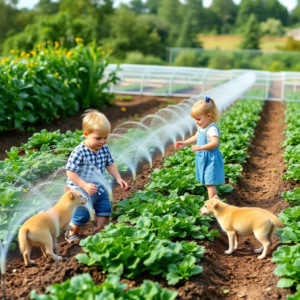
Drip irrigation is one of the best ways to water your vegetable garden efficiently while conserving water.
The Top 5 Drip Irrigation Systems listed above have proven to be effective, durable, and easy to use for both small and large gardens.
Whether you choose Rain Bird for a simple setup or Drip Works for a fully customized design, any of these systems will help ensure your vegetables thrive.
FAQs about Drip Irrigation Systems for Vegetable Gardens
What is drip irrigation, and why is it beneficial for my vegetable garden?
Drip irrigation is a method of watering plants by delivering water directly to the soil near the roots through a system of tubing, emitters, and valves.
It’s beneficial for vegetable gardens because it reduces water waste, minimizes evaporation, and ensures that plants receive consistent hydration, promoting healthier growth.
How do I choose the right drip irrigation system for my garden?
To choose the best system, consider the size of your garden, the types of plants you’re growing, and your water pressure.
Smaller gardens might do well with simpler systems like Rain Bird or Orbit, while larger or more complex gardens may benefit from customizable options like DripWorks or Drip Depot.
Can I install a drip irrigation system myself?
Yes! Drip irrigation systems are designed for easy installation and can be set up by beginners. Many systems come with instructions and resources to help you design and install your setup. For those new to gardening, systems with pre-assembled kits, like those from Orbit or Rain Bird, are an excellent choice.
Do I need a timer for my drip irrigation system?
Yes, using a timer is highly recommended. A timer ensures that your garden is watered consistently, prevents overwatering, and saves time. Many drip irrigation systems, like those from DripWorks and Rain Bird, offer timer options that can be integrated into the system.
How often should I run my drip irrigation system?
The frequency of watering depends on your garden’s specific needs, weather conditions, and soil type. On average, vegetable gardens may need watering every 2-3 days.
To find the right schedule, monitor the moisture level of the soil and adjust watering times accordingly.
What is the Best Irrigation Method for Vegetables?
When it comes to growing healthy, thriving vegetables, proper irrigation is key. Different irrigation methods offer distinct advantages, depending on your garden size, water availability, and the types of vegetables you’re growing.
Let’s explore the best irrigation methods for vegetable gardens, focusing on the most effective ways to keep your plants hydrated.
What is the best irrigation system for a vegetable garden?
Drip irrigation is the best it delivers water directly to plant roots, saving water and reducing weeds and disease.
What is the best way to irrigate a vegetable garden?
Use drip irrigation with mulch for deep watering and moisture retention. Water early in the day for best results.
What are the different types of garden irrigation systems?
-
Drip irrigation – Precise, water-efficient
-
Soaker hoses – Easy and affordable
-
Sprinklers – Best for lawns, not veggies
-
Manual watering – Good for small gardens
-
Timers – Automate any system
What method of irrigation is best used in your garden?
For most home gardens, drip or soaker hoses work best. Choose based on your garden’s size, layout, and water needs.
Choosing the right irrigation system can make a big difference in the health and productivity of your vegetable garden.
While there are several methods available, drip irrigation stands out as the most efficient and reliable option, especially for conserving water and targeting plant roots directly. For smaller or raised beds, soaker hoses are also a great low-cost alternative.
Ultimately, the best system depends on your garden size, budget, and how hands-on you want to be. No matter what you choose, consistent and deep watering is key to growing healthy, thriving vegetables.

